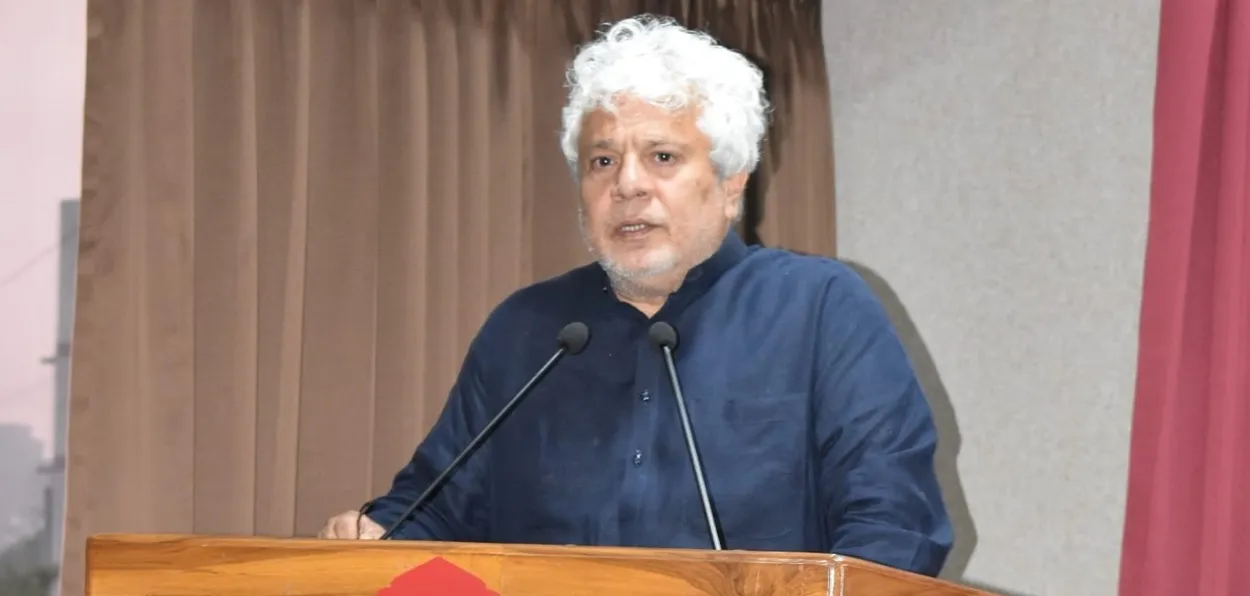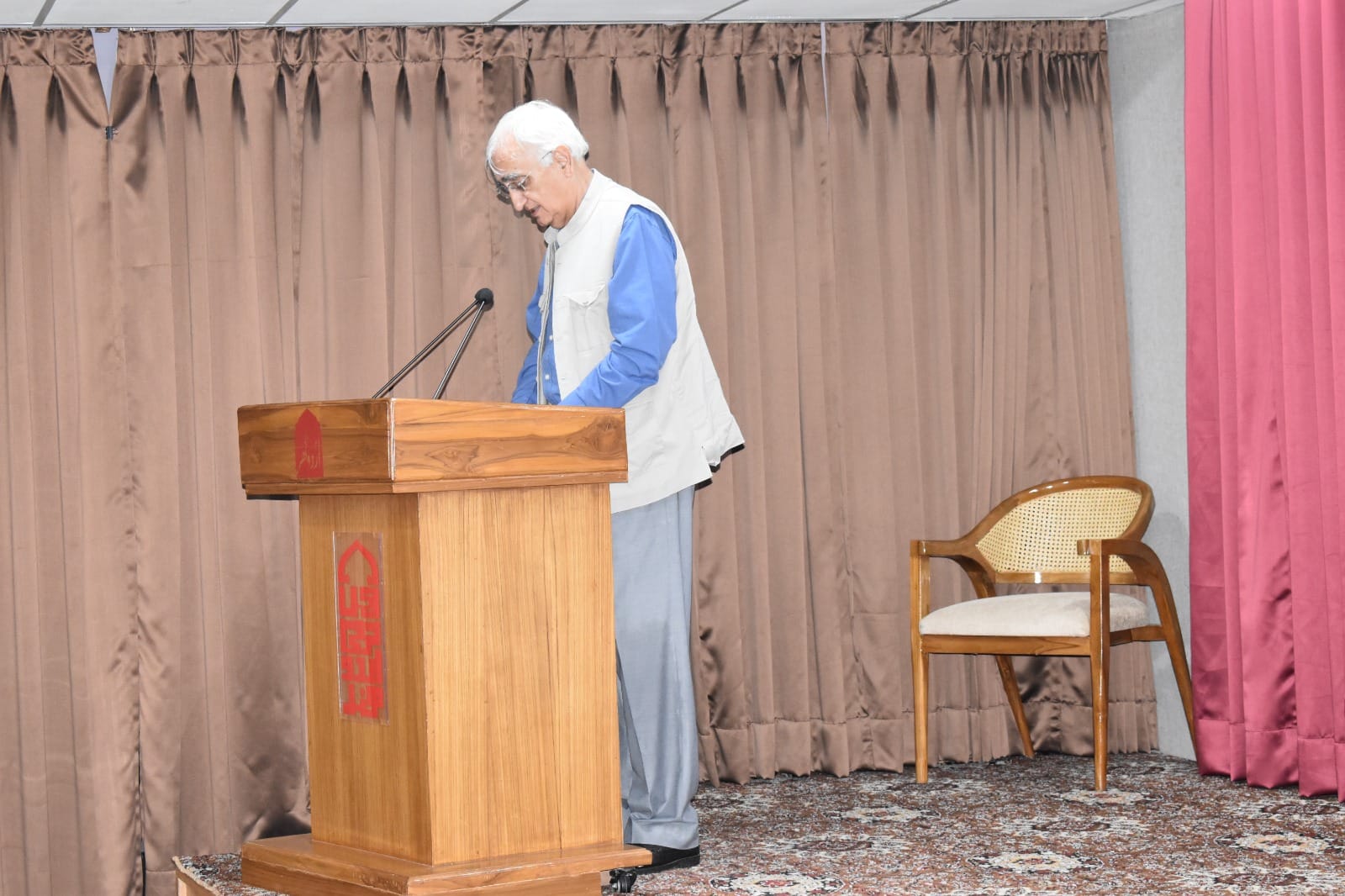
Saquib Salim
Ramcharitmanas, one of the epic literary texts is composed by poet Tulsidas in Awadhi. Surdas, Amir Khusro, Kavi Bhushan, and several others used Braj Bhasha to compose their poetry. Yet, the academia, politics, and elite discourse do not consider Awadhi and Braj Bhasha as languages. For them, these are dialects of Hindi.
Even though millions of people speak these languages, literature in these languages predates ‘Hindi’ and ‘Urdu’ languages – both have thriving entertainment industries - these languages do not get recognition. Urdu poet Fahmida Riaz once remarked that the language of Tulsi and Kabir, which was her language as well, had been reduced to the status of ‘regional language’ because of political prohibitions and maneuvers. The story of Maithili, Assamese, Bengali, Tamil, Telugu, etc. is no different. While a few of them get recognition as ‘regional languages’ many others are branded as dialects.
Paul Brass pointed out the problem in one of his papers published in 2004. He wrote, “The extent of displacement or subordination of such subsidiary languages and dialects to Hindi may be discerned even now, in the 1991 census, where, under the heading of Hindi, forty-eight ‘languages and mother tongues’ are subsumed, along with an unspecified number of ‘others’.
While some of these languages and mother tongues are spurious, merely alternative, local names of various mutually intelligible dialects, others are well known, widely spread, and long recognized (especially since the great linguist, George Grierson identified them in his massive, multi-volume Linguistic Survey of India, published at the turn of the twentieth century), and numerically quite large. For example, Bhojpuri, the largest, with 23,102,050 speakers has a larger number of speakers than seven of the nineteen Scheduled Languages, including languages such as Assamese, which is the official language of the state of Assam.”
Anjuman Taraqqi Urdu (Hind) has taken the initiative to undo this injustice towards the languages that are the mother tongue of millions of people. It is a colonial legacy that Indian languages were put on a pedestal below by terming them ‘vernacular’ and then classifying most of the mother tongues as regional languages or dialects. Anjuman, on 30 June, organized Adab Sarai : A Writers’ Forum For Creative Expression, an initiative to help Indian languages develop.
The statement from Ather Farouqui, General Secretary of Anjuman Taraqqi (Hind), reads “Adab Sarai is the new initiative of Anjuman Taraqqi Urdu (Hind). It will be an open and accessible platform for creative writers in all Indian languages, including Indian English. It has been conceived purely for the love of creative literature. To begin with, there will be a quarterly event on the last Sunday of the third month from 6 to 9 p.m. The basic idea is to have literary gatherings, where participants will read excerpts from their writings: a story, a poem, an enactment, or a reading of an act from a play….
 Salman Khurshid speaking at Adab Sarai
Salman Khurshid speaking at Adab Sarai
"The role of the Anjuman will be that of an enabler, providing a platform without interfering in any way. Urdu may be encouraged but will not be imposed, and English and Hindi are equally welcome, as are the regional actually national languages of India. Unfortunately, the synonym 'dialect' coined by Western Scholars is used for national languages in the developing world, especially India, and most surprisingly. at the expense of the public exchequer and through state-run universities' departments of Linguistics and English Studies! Putting some languages in one category of major languages, the category of the 'Other' is automatically created, and the languages with a tag of minor languages, languages of folk literature, and so-called dialects are automatically marginalized. The main beneficiary of this short-sighted strategy in India is modern Hindi, which can incorporate promising languages in its fold at the cost of their growth.”
The event which was held at Urdu Ghar in New Delhi walked the talk. Anjuman did not pay lip service to the language issue. A point was made when the inaugural welcome address was made by Yasmeen Rahman in Assamese, a language that few understood in the audience. The proceedings were later taken over by Sadaf Fatima, in Urdu, and Ayesha Najeeb, in English.
The first writer to interact was Suhel Seth, an Indian English writer, who read out an act out of Shakespeare’s play followed by Salman Khurshid, who has authored several books. Khurshid shared an act from his very popular play ‘Sons of Babar’.
Chandrabhan Khayal, a popular Urdu poet, and Salim Saleem recited their poems in Urdu. Acclaimed novelist, Jerry Pinto, recited "Crossing the River of Meaning" and "A Prayer for Palestine" and Mustansir Dalvi recited his poems "Babar Dreams of Manti", "Geodesic", "Our Daily Karma", "Kintsukuroi", Himant Divate's Paranoia in Marathi and Faiz Ahmed Faiz's "Rang Hai Dil Ka Mere" with their Begkish translations.
Ather Farouqi later commented, “This initiative is envisioned as a regular literary conclave that will convene every three months, providing emerging writers, poets, and playwrights with a platform to exchange ideas, workshop their creations, receive constructive feedback, and, hopefully, publish their work… Crucially, this is an entirely gratis enterprise, starkly contrasting to the trendy but exorbitant ‘writers’ retreats’ and workshops that are often beyond the reach of most upcoming and talented artists. In this age of social media, where the creative process has been commoditized, and follower counts usually overshadow literary merit, Adab Sarai aims to counter this trend. It seeks to provide a fertile ground for the rich and diverse literary traditions of Urdu, Hindi, Tamil, Telugu, Kannada, Malayalam, Punjabi, Sindhi, Dogri, Kashmiri, Konkani, Oriya, Bangla, Assamese, Bodo, Nepali, Bhojpuri, Maithili, Braj, Awadhi, and all other Indian languages, as well as English, to thrive and engage in meaningful dialogue without Hindi and English dominating as is the current trend.”
Why is this an important initiative for the languages which have been pushed to the margins? Einar Haugen provides an answer in his paper Language, Dialect, Nation. He says, “When used in this sense, a dialect may be defined as an undeveloped (or underdeveloped) language. It is a language that no one has taken the trouble to develop into what is often referred to as a "standard language."
"This dimension of functional superiority and inferiority is usually disregarded by linguists, but it is an essential part of the sociolinguist's concern. It becomes his special and complex task to define the social functions of each language or dialect and the prestige that attaches to each of these. What is meant by an "undeveloped" language? Only that it has not been employed in all the functions that a language can perform in a society larger than that of the local tribe or peasant village. The history of languages demonstrates convincingly that there is no such thing as an inherently handicapped language. All the great languages of today were once undeveloped. Rather than speak of undeveloped languages as "dialects," after the popular fashion, it would be better to call them "vernaculars," or some such term, and limit "dialect" to the linguist's meaning of a "cognate variety." We are then ready to ask how a vernacular, an "undeveloped language," develops into a standard, a "developed language." To understand this we will have to consider the relation of language to the nation.”
ALSO READ: What inspired Chanderbhan Khayal to pen world's longest poem on Prophet Muhammad
Adab Sarai might provide that important push to these languages to develop and capture the central stage of our national discourse. Which, in turn, would help in strengthening the nation by taking fruits of the ‘economic development’ to the masses. As Paul Brass puts it, “From the point of view of empowerment and disempowerment, however, the interlinguistic balance that prevails in India rests upon a base of mass illiteracy in most languages and a consequent demarcation of opportunities for power, as well as dignity and economic advancement, into the three broad tiers outlined earlier: the upper elite tier of the bilinguals, who are proficient in English or Hindi, especially the former; the intermediate tier of educated speakers of a dominant regional language only; and the lower tier of poorly educated or illiterate monolinguals or bilinguals in regional and/or local languages/dialects/ mother tongues.”
